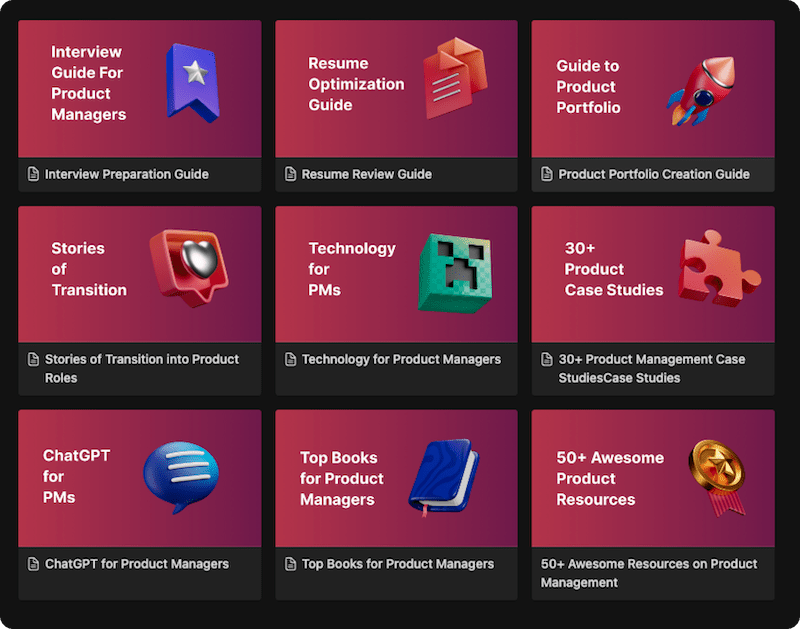Imagine your company has just discovered a massive underground reserve of crude oil. It’s incredibly valuable, but in its raw state, it’s a messy, unusable goo. You can’t put crude oil directly into a car. It needs to be explored, extracted, refined, and packaged into valuable, user-friendly products like gasoline, jet fuel, or plastics. So, who is the manager of this entire, complex refinery process? In the modern digital economy, where data is the new oil, that person is a Data Product Manager.
Data Product Management is the specialized, rapidly growing discipline that treats data not as a simple byproduct of business operations, but as a core asset to be transformed into valuable products. It’s the bridge between the complex world of data science and the strategic world of product management, ensuring that a company’s vast data reserves are refined into products that solve real problems and drive business growth.
This guide will serve as your blueprint for the entire data refinery. We’ll explore what a “data product” actually is, what a Data Product Manager does, how their role differs from a traditional PM, and the skills you need to thrive in this exciting field. By the end, you’ll have a clear understanding of this critical discipline that is shaping the future of technology.
Definition & Origin
The role of the Data Product Manager is relatively new, emerging in the 2010s as a response to the “Big Data” revolution. As companies like Google, Meta (Facebook), Netflix, and Amazon began to accumulate unprecedented amounts of data, they realized two things:
- This data was an immensely valuable asset.
- Data science projects were failing at high rates because they were treated as research experiments, disconnected from clear business goals and user needs.
The role of the Data Product Manager was created to solve this problem-to be the strategic leader who ensures that data science and machine learning efforts are focused, prioritized, and “productized” to deliver measurable value.
Benefits & Use-Cases: Why This Role is in High Demand
The rise of the Data PM is a direct result of the tangible value they bring to a data-driven organization.
- Unlocks the Value of Data: They transform raw data from a cost center (storage and processing) into a revenue-generating asset.
- Ensures ROI on Data Science: By aligning data science initiatives with clear business problems and user needs, Data PMs dramatically increase the success rate of AI and ML projects.
- Improves Data Quality and Trust: By treating data like a product, they champion the need for high-quality, reliable, and well-documented data sources, fostering a culture of data trust across the organization.
- Accelerates Innovation: They create a clear strategy and roadmap for data products, enabling companies to build and launch sophisticated, data-powered features faster.
- Fosters a Data-Driven Culture: The Data PM acts as a translator and evangelist, bridging the gap between highly technical data teams and the rest of the business.
What Exactly is a “Data Product”?
To understand Data Product Management, you must first understand what a “data product” is. It’s not just a dashboard. Data products generally fall into three main categories:
1. Data-as-a-Product
These are products where the primary value is the data itself, often delivered as a curated, reliable feed via an API. The users are often developers or other systems.
- Real-World Example: The AccuWeather API, which provides weather data to developers to build into their own applications. AccuWeather’s product is the high-quality, reliable stream of weather data.
2. Data-Powered Products (AI/ML Products)
These are user-facing products where the core functionality and “magic” are driven by a data-intensive algorithm or machine learning model.
- Real-World Examples:
- Spotify’s Discover Weekly: The “product” is a personalized playlist generated by a sophisticated recommendation engine.
- Uber’s dynamic pricing: The price you see is the output of a real-time predictive model that balances supply and demand.
- Google Search: The entire product is an enormous machine learning system that ranks billions of web pages to answer a user’s query.
3. Data & Analytics Platforms
These are products that provide data and insights to help users make better decisions. The users are often internal business stakeholders.
- Real-World Examples:
- Google Analytics: A platform that ingests website data and provides it to marketers in an accessible way to understand their performance.
- An internal Sales Dashboard: A BI tool that gives the Chief Revenue Officer a clear, reliable view of the sales pipeline. This dashboard is a product, and the sales team are its customers.
How It Works: The Data Product Lifecycle
While a Data PM uses many of the same agile principles as a traditional PM, their focus and the lifecycle of their products are unique.
Step 1: Opportunity Discovery and Data Strategy
The process starts not with a feature idea, but with a business problem or opportunity. The Data PM identifies areas where a data-driven solution could create significant value, and then defines the high-level strategy for what data is needed to get there.
Step 2: Data Sourcing, Acquisition, and Engineering
Unlike traditional PMs, a Data PM must ask, “Do we have the data we need to build this?” They work closely with data engineers to identify, acquire, and clean the raw data (the “crude oil”) needed for the project. This includes ensuring data quality, reliability, and ethical compliance.
Step 3: Modeling, Experimentation, and Validation
This is the core “data science” phase. The Data PM works with data scientists to define the goals for a machine learning model. They act as the voice of the user, ensuring the model is optimized to solve the right problem, and they manage the experimentation process to validate its effectiveness.
Step 4: Productization and User Experience
A successful model in a lab is not a product. “Productization” is the critical and often underestimated step of integrating the model or data into a real, usable application. The Data PM works with engineers and designers to build the user-facing components, APIs, or dashboards that will deliver the value of the data to the end-user.
Step 5: Monitoring, Iteration, and Deprecation
Data products are not static. Models can drift and become less accurate over time (“model decay”). The Data PM is responsible for monitoring the performance of the data product in the real world, planning for iterations and retraining of models, and eventually, deciding when a data product should be retired.
Data PM vs. Traditional PM: The Key Differences
While both roles require core product management skills, the Data PM role requires a unique set of additional competencies.
| Aspect | Traditional Product Manager | Data Product Manager |
| Core Focus | User-facing features and workflows. | Data as an asset and the engine for features. |
| Primary Stakeholders | Software Engineers, UX Designers. | Data Scientists, Data Engineers, Analytics Engineers. |
| Key Artifacts | PRDs, User Stories, Wireframes. | Data Product Specs, Model Requirements, Data Dictionaries. |
| Success Metrics | Feature adoption, conversion rate, user engagement. | Model accuracy, data quality, ROI of data initiatives, user trust in the data. |
| Technical Skills | Strong understanding of software development lifecycle. | All of the above, plus a strong understanding of statistics, machine learning concepts, data architecture, and SQL. |
| Biggest Challenge | Managing scope and prioritizing features. | Ensuring data quality, managing uncertainty in R&D, and translating complex data concepts to business stakeholders. |
Mistakes to Avoid: Common Data Product Pitfalls
- Treating it like a Software Project: Data science is inherently uncertain. A Data PM must be comfortable managing a portfolio of experiments, knowing that not all of them will succeed.
- Ignoring Data Quality (“Garbage In, Garbage Out”): The most sophisticated ML model in the world is useless if it’s trained on poor-quality data. A Data PM must be obsessed with data quality and lineage.
- Underestimating the “Last Mile”: Getting a model to 90% accuracy in a lab is the easy part. The hard part is productizing it-integrating it into a reliable, scalable, and user-friendly product.
- Failing to Act as a Translator: A Data PM must be able to explain complex data science concepts to business leaders in a simple, clear way, and translate business goals into technical requirements for the data team.
Conclusion: The Strategic Imperative of Data Product Management
The emergence of the Data Product Manager is not merely a new title in the corporate directory; it represents a fundamental evolution in how modern organizations create value. They are the essential bridge connecting the immense potential of data science with the concrete, strategic goals of the business. By shifting the paradigm from data as a raw resource to data as a product, these leaders ensure that investments in AI, machine learning, and analytics yield a tangible return.
The role moves beyond the traditional confines of product management, demanding a unique blend of product sense, technical literacy, and strategic business acumen. A Data PM’s success isn’t just measured in feature adoption but in the accuracy of a model, the trust in a data source, and the quality of the business decisions their products enable. As companies increasingly compete on their ability to leverage data, the Data Product Manager’s function becomes non-negotiable—a core driver of innovation, efficiency, and a sustainable competitive advantage in a data-driven world. In essence, the Data PM ensures that a company’s data doesn’t just sit in a warehouse; it gets to work.
FAQ’s
While they share core PM skills, a Data PM’s focus and required competencies are distinct. A traditional PM focuses on user-facing features and workflows, whereas a Data PM treats data itself as the product or the engine that drives the product. They must have a deeper technical understanding of the data lifecycle, including data engineering, statistics, and machine learning concepts, to effectively manage projects where the primary challenge is often data quality and model performance, not just UI/UX.
While you don’t need to be a software engineer, a high degree of technical literacy is required. You must be able to speak the language of your stakeholders. Proficiency in SQL is generally considered a minimum requirement to query data and understand its structure. A conceptual understanding of machine learning and data architecture is also essential.
The Data Scientist is the builder; they have deep technical expertise in statistics and programming to build and train the models. The Data Product Manager is the strategist; they define the “why” and the “what,” ensuring that the model the data scientist builds will solve a real user problem and deliver business value.
Yes, Data Product Management is a great career path. It’s one of the fastest-growing and most in-demand roles in the tech industry. As more companies become data-driven, they need skilled professionals who can turn data into valuable products, insights, and business strategies. This role offers strong growth opportunities, high salaries, and the chance to work on impactful problems across various industries.
Yes, a dashboard is a type of data product. The key is treating it like one: it needs a clear owner (the Data PM), a roadmap, and a rigorous focus on data quality, reliability, and business impact, rather than being a one-off report.
Learn better with active recall quiz
How well do you know What is Data Product management? Let’s find out with this quick quiz! (just 10 questions)


